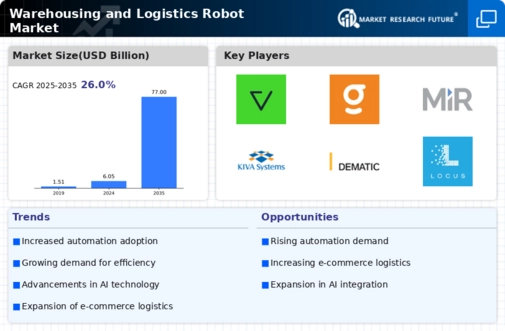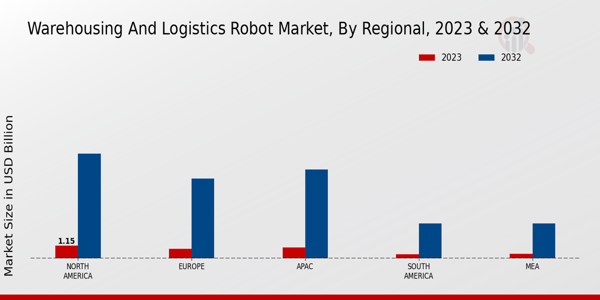The Warehousing and Logistics Robot Market is getting remarkable traction due to several various market drivers. The need for supply chain automation is compelling companies to use robotics that increase efficiency while lowering operational expenditures. There are also some other factors such as increase in e commerce activities and needing faster delivery times that are driving the market. In addition, the aim to enhance stock control as well as reduce human mistakes is making organizations put money in state of the art robotic technologies that would assist in automating processes.
There are a number of opportunities awaiting to be tapped within this market. By improving artificial intelligence and machine learning, companies will be able to create sophisticated robots that can handle a wide range of tasks on short notice.
Incorporation of new technologies particularly the Internet of Things (IoT) is increasing opportunities for better connectivity and sharing of data, which can bolster tracking of performance and maintenance of equipment. Furthermore, there are opportunities for development within such sectors as health care and agriculture where logistics robots can assist to enhance provision of services. In addition, other developing countries are equally becoming good targets for such expansion as investors seek countries to upgrade their logistics systems.
Some of the recent developments as regards the warehousing and logistics robot sector is recruiting a greater number of personnel with a goal of increasing research and development so as to invent more robotic solutions. The rise of collaborative robots, also known as cobots are on the up as they can assist their human counterparts hence increasing the level of safety.
The popularity of autonomous mobile robots is also on the increase due to the ability of these machines to navigate complex warehouse layout. Companies are becoming more interested in being sustainable, which led to development of energy efficient robots. In terms of where the industry is expected to go, it is reasonable to predict that the industry will keep on changing with the introduction and popularity of such technologies as artificial intelligence which will enhance consumer expectations and meet not only traditional but new operational challenges as well.
Source: Primary Research, Secondary Research, MRFR Database and Analyst Review
The integration of robotics in warehousing and logistics is poised to enhance operational efficiency and reduce labor costs, reflecting a transformative shift in supply chain management.
U.S. Department of Commerce









